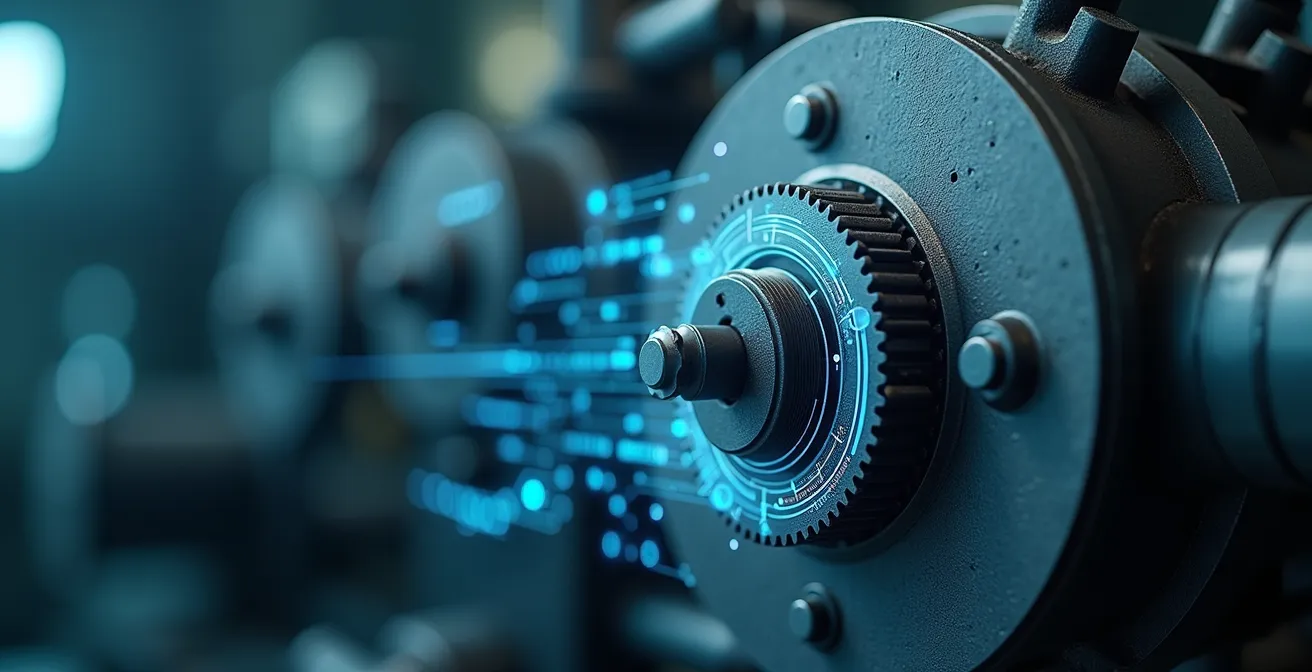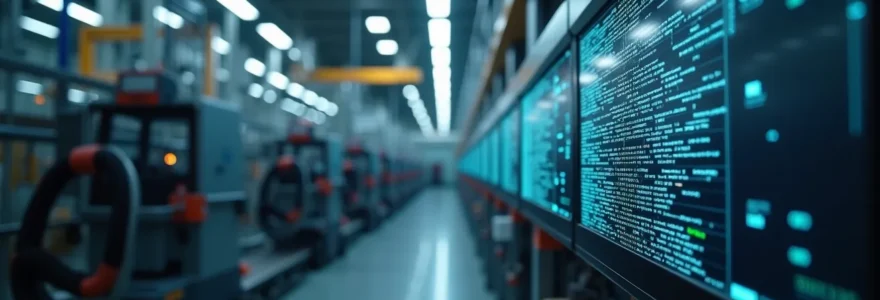Industrial design has long been a discipline of form, function, and materials. Yet, a profound shift is underway, moving beyond physical constraints into the realm of intelligent, data-driven creation. The convergence of Information Technology (IT) and Operational Technology (OT) is not merely an operational upgrade for factories; it is the fundamental force reshaping product design itself. This integration creates a live feedback loop between a product’s performance in the real world and its next design iteration, transforming the practice into a proactive, predictive, and deeply human-centric art form. By harnessing this flow of data, designers can anticipate user needs, enhance experiences, and build resilient systems, a transition supported by the solutions from experts like Axians.
The Blueprint for Data-Driven Design
- From Reaction to Prediction: Leverage IT/OT data to move from fixing flaws to designing future-proof functionality based on real-world usage.
- Human-Centric Interfaces: Use operational insights to create intuitive and personalized user experiences for complex industrial machinery.
- Sustainability by Design: Integrate lifecycle data to build products that are more durable, repairable, and aligned with circular economy principles.
- The Collaborative Mandate: Understand that successful integration depends on bridging the cultural and skills gap between IT, OT, and design teams.
Unlocking novel functionality: How IT/OT data inspires design breakthroughs
The fusion of IT and OT dismantles the traditional wall between a product’s creation and its operational life. Instead of relying on post-launch feedback or customer complaints, designers now have access to a continuous stream of real-time performance data. This allows for a paradigm shift from reactive updates to a proactive design evolution, where insights from the field directly inform the next generation of features. This constant dialogue between product and user uncovers previously invisible needs and unlocks new market opportunities, fundamentally revolutionizing industrial product design. The economic significance of this trend is undeniable, with the global IT/OT market projected to grow from $720 billion in 2023 to over $1 trillion by 2027.
Rockwell Automation Adopts Agile for OT Software Development
Rockwell Automation implemented Agile methodologies into OT software development, resulting in rapid iteration and improved customer responsiveness, illustrating how converged IT/OT data fosters proactive design breakthroughs. As industry expert Andrew Stump noted, this agile, software-centric approach transformed the company’s culture, enabling innovation driven directly by integrated IT/OT data.
By analyzing operational metrics—such as energy consumption, component stress, and user interaction patterns—design teams can identify pain points and areas for improvement with surgical precision. This data-rich approach enables the creation of entirely new product categories or features that solve problems users may not have even known how to articulate. The result is a product that doesn’t just perform its function but adapts and improves based on its environment.

This deeper understanding, drawn from live data, allows designers to move beyond aesthetics and ergonomics to engineer true resilience and intelligence into the core of the product. The visual complexity of modern machinery is increasingly a reflection of its underlying data architecture, where every component’s performance is a potential source of design inspiration.
Navigating the design studio: Overcoming IT/OT integration challenges in product development
While the potential of IT/OT convergence is immense, its implementation is not without friction. The primary obstacles are often not technical but human. IT professionals, focused on data security and network integrity, and OT engineers, concerned with physical processes and uptime, traditionally speak different languages and operate with different priorities. Bridging this cultural and knowledge gap is the first critical step for any design team venturing into this space.
What are the main challenges in IT/OT integration?
Beyond technical hurdles, the primary challenges are cultural divides between teams, significant skill gaps, and ensuring robust cybersecurity is embedded in the design process from the very beginning.
Integrating these disciplines requires a new, collaborative framework where data specialists and product designers work in synergy from the initial concept phase. This ensures that considerations like data compatibility, hardware requirements, and especially cybersecurity are not afterthoughts but are woven into the design brief itself. As noted by one industry leader, the challenge is deeply rooted in organizational structure.
There are cultural differences and conflicts on prioritization as well as lack of cross-training leading to skill gaps in IT-OT integration.
– Vinod D’Souza, Industrial Cyber
Successfully managing this complexity means establishing clear protocols for data standardization and creating shared workflows that accommodate both digital and physical design tools. The goal is to build a common ground where technical constraints and creative vision can coexist and inform one another, a process exemplified in critical infrastructure projects where security and operation must be seamless.
IT/OT Integration Enhances Airport Infrastructure Security
An airport leveraged IT/OT collaboration to improve operational security by bridging gaps and managing legacy OT systems alongside advanced IT networks. This project underscored the necessity of unified teams to protect complex, converged environments.
To navigate these challenges effectively, organizations must invest in new processes and skill sets. The following steps provide a foundational roadmap for building a secure and collaborative design environment where IT and OT can converge successfully.
A successful converged design studio is one where data analysts, cybersecurity experts, and industrial designers collaborate seamlessly. This multidisciplinary environment ensures that the final product is not only innovative and functional but also secure and resilient from its core.
Key Steps to Secure IT/OT Integration
- Cross-train IT and OT staff to bridge skill gaps.
- Implement layered cybersecurity protocols tailored to OT environments.
- Establish incident response plans involving IT and OT teams.
- Use secure remote access tools with least privilege principles.
Intuitive interfaces for intelligent machines: The UX/UI revolution driven by IT/OT
As industrial equipment becomes more complex and connected, the design of its user interface (UX/UI) becomes paramount. IT/OT convergence provides the raw data needed to revolutionize these interfaces, transforming them from static control panels into dynamic, personalized dashboards. By analyzing operator workflows and interaction data, designers can craft experiences that simplify maintenance, reduce cognitive load, and empower users with actionable insights.
This data-driven approach to UX/UI is not merely about aesthetics; it has a direct impact on operational effectiveness. Research shows that a well-designed UI can boost user task efficiency by up to 25%. For industrial applications, this translates to increased productivity, fewer errors, and enhanced safety. As experts from Aguayo suggest, the core principles revolve around putting the user first and providing clear, immediate feedback, which is essential for managing complex systems effectively.
Effective dashboards do more than just display data; they tell a story. They translate millions of data points from OT sensors into clear visual cues, predictive alerts, and guided instructions for operators and maintenance personnel. This ensures that the intelligence gathered by the converged system is not lost in spreadsheets but is delivered to the right person at the right time, in the most intuitive format possible.
Best Practices for UX/UI in Industrial Systems
- Conduct regular user research and usability testing.
- Design responsive, mobile-compatible interfaces.
- Apply consistent navigation and clear feedback mechanisms.
- Use visual hierarchy and meaningful iconography.
Designing for Circularity and Strategic Edge: IT/OT’s Role in Sustainable Product Leadership
The convergence of IT and OT offers a powerful toolkit for sustainable design, enabling a shift from a linear “take-make-dispose” model to a circular one. By collecting operational data on wear-and-tear, energy usage, and component failure, designers can make informed decisions that enhance a product’s longevity, repairability, and recyclability. This data provides a clear picture of a product’s entire lifecycle, revealing opportunities to minimize its environmental impact from cradle to grave.
This approach is gaining significant traction in industries aiming for greater sustainability, where 58% of leading chemical companies now prioritize process design for climate and circularity objectives. Leveraging IT/OT insights allows designers to select more durable materials, engineer modular components for easy replacement, and create “digital twins” that simulate long-term performance and environmental effects before a single physical prototype is built. As B. Marconnet et al. highlight in their research, these insights are crucial for creating products optimized for a minimal footprint.
Sustainability Indicators in Smart Product Design Using Industry 4.0 Technologies
This study proposes a methodological framework leveraging Industry 4.0 technologies to assess sustainability indicators in smart product design, focusing on lifecycle environmental impacts and circularity. It provides a clear pathway for using data to make empirically-backed sustainable design choices.
Ultimately, designing for circularity is not just an environmental imperative but a strategic advantage. Intelligent, adaptable, and inherently sustainable industrial products establish market leadership by aligning with regulatory trends and growing customer demand for responsible manufacturing. The data collected through converged systems provides the evidence needed to validate sustainability claims and build trust with consumers.
The very materials chosen for a product can be informed by data on their real-world durability and end-of-life potential. This granular, data-driven approach to material science and component design is the bedrock of the next generation of sustainable industrial goods.
Key Takeaways
- IT/OT convergence shifts design from being reactive to proactively anticipating user needs through real-time data.
- Overcoming cultural and skill gaps between IT and OT teams is the most critical challenge to successful integration.
- Operational data is key to creating intuitive UX/UI that simplifies complex machinery and boosts operator efficiency.
- Lifecycle data from converged systems empowers designers to create sustainable products built for longevity and circularity.
The evolving designer: Fostering a cross-disciplinary mindset for converged industrial systems
The era of the siloed designer is over. In a world of converged industrial systems, the most valuable designers are systems thinkers who can navigate the intersections of IT, OT, and human-centered design. This requires cultivating a collaborative environment where cross-disciplinary teams work in synergy, adopting agile and iterative methodologies that can respond quickly to the continuous feedback loop of data. Such an environment thrives on open communication and a shared vision, allowing for truly innovative solutions. To explore this topic further, you can Discover how innovation reshapes products.
Collaboration and teamwork across diverse disciplines drive innovative solutions for complex industrial challenges.
– Pino De Maio, LinkedIn Article
Furthermore, the immense volume and complexity of data generated by IT/OT systems call for new tools. Artificial intelligence and advanced analytics are becoming essential partners for designers, augmenting their intuition and helping them identify patterns and opportunities that would be impossible to spot manually. This partnership between human creativity and machine intelligence is at the heart of modern product development, where strategic decisions are informed by data-driven insights.

The modern design process is a conversation between diverse experts. As industry insights confirm, the intentional assembly of multidisciplinary teams is the secret to unlocking creative potential and enhancing problem-solving capacity in the face of complex industrial challenges.
Traits of Well-Designed Multidisciplinary Teams
- Embrace diversity in experience, skills, and cultural perspectives.
- Maintain a collaborative mindset with open communication.
- Adopt iterative design methods with continuous feedback.
- Foster shared vision and alignment on project goals.
Frequently Asked Questions on IT/OT Integration
What is the main difference between IT and OT?
Information Technology (IT) manages data, networks, and enterprise systems, focusing on information flow and security. Operational Technology (OT) manages and controls physical industrial processes and machinery, focusing on operational uptime and safety. Convergence brings these two worlds together.
Is IT/OT convergence only for large manufacturing companies?
No. While large manufacturers are major adopters, the principles of IT/OT convergence are scalable. Small and medium-sized enterprises can also benefit by integrating sensor data and operational analytics to improve product design, efficiency, and maintenance, even on a smaller scale.
What is the biggest barrier to successful IT/OT integration?
The most significant barrier is often cultural rather than technical. Overcoming the historical divide, different priorities, and skill gaps between IT and OT teams is the most critical challenge. Fostering a collaborative environment is essential for success.
How does IT/OT data improve product sustainability?
IT/OT data provides real-world insights into how a product uses energy, when its components fail, and how it performs over its entire lifecycle. Designers can use this information to select more durable materials, design for easier repair, and plan for end-of-life recycling, creating a more circular and sustainable product.
